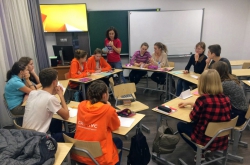IT solutions for scientists

Digital Science is a company that focuses on the development of advanced solutions in the field of research and publication. The tools they develop are designed to help researchers and research associates, science journalists, as well as editors and publishers. The company offers over ten products aimed at various aspects of scientific activity.
Digital Science is part of Holtzbrinck Publishing Group, an international media company and one of the major publishers of science literature; for one, it’s the publisher of Scientific American. Its products are used by the world’s leading universities and research institutions, and it has offices in Great Britain, Germany, Russia, Australia, Romania, the USA and Israel.
Recently, Digital Science conducted a series of open workshops specifically for Russian universities, where Igor Osipov, CEO of Digital Science Russia, and the company’s leading experts spoke about some of their key products.

According to them, it was the change in the approach to research activity, the radical change in the whole paradigm and concepts of working with data that gave rise to the emergence of the solutions they work on. If before, the assessment of a research was based on quantitative indicators only, i.e. the number of published articles and materials as well as citations from them, now, the metrics are quite different.
Relevant reading: Dimensions: New Analysis Platform Makes Science Trends Analysis Easier
For one, more focus is placed on different kinds of activities involving the public associated with the research: how a research is perceived by the public and the academic community, what kind of a grant made it possible, the details of preliminary work on the research and the length of the pre-publication period. The issue of publishing datasets and pre-publication statistical materials becomes very important.
What’s more, a tendency that we now witness is that more and more research institutions aim to develop a full-fledged interconnected infrastructure inside their organizations: for example, they create repositories not only for storing all of the publications and research projects that are conducted by them, but also all of the pre-publication source materials.
Figshare

Products by Digital Science help research institutions approach such tasks by using modern IT solutions. Figshare, for instance, is both an instrument for creating repositories and libraries for internal use and also a portal for open science that can be used to share publications, research, materials and data, making them available not only for the scientific community but the general public, as well.
It’s key purpose is to make science as open as possible, and research results as accessible as they can get, and to also help scientists and institutions publish and promote their inventions without the need to address specialized journals, increase their scientific authority and the level of their influence on the development of their professional field. A research showed that in the long run, publications on open libraries and online repositories like Figshare get 25% more citations.
Figshare unites several very important tools that are essential for the operation and publication activity of both individual researchers and major institutions like universities, laboratories and research centers.
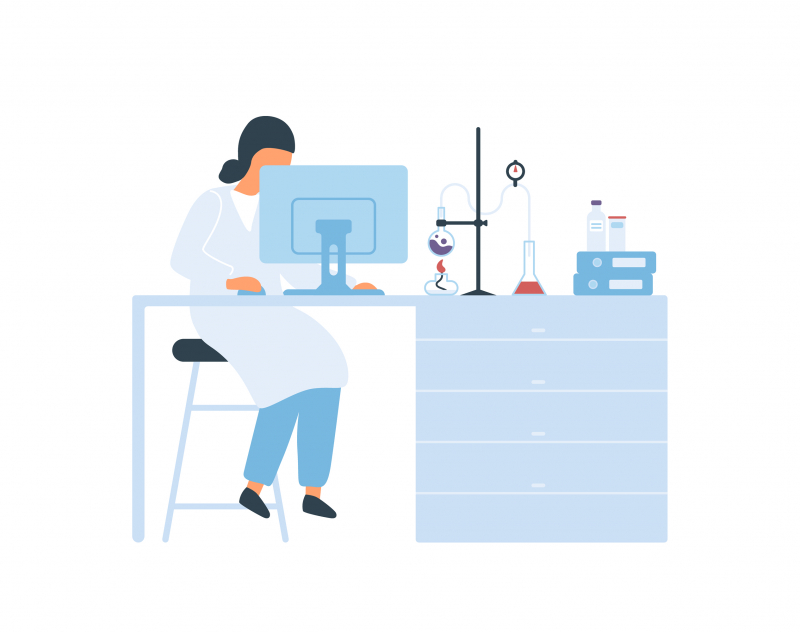
First of all, Figshare makes it possible to create a well-organized and secure storage for any kind of data in any format: datasets, documents, articles, code, images, audio and video files, presentations and so on; all of those can be arranged and organized in accordance with one’s needs, and you can also control the openness and accessibility of these materials. For example, you can use Figshare to create a web page of a research unit with an open library containing all of its research. The tool is already being used by leading research institutions; in Russia, among its users are Moscow State University, St. Petersburg State University, Novosibirsk State University, Moscow Institute of Physics and Technology, and the Russian Academy of Sciences.
Secondly, all these data can be easily shared, for example with other scientists and research institutions, as part of collaborations or for substantiation of your research when publishing it in scientific journals or demonstrating your results.
Thirdly, all objects and results of your research that are published in open access on Figshare’s digital platform get a digital object identifier (DOI) that makes them available for citation based on the Creative Commons license. Such publications and objects are indexed in key international resources: Google Scholar, Google Dataset Search, Dimensions, DataCite, DataONE, Clarivate Data Citation Index and others.
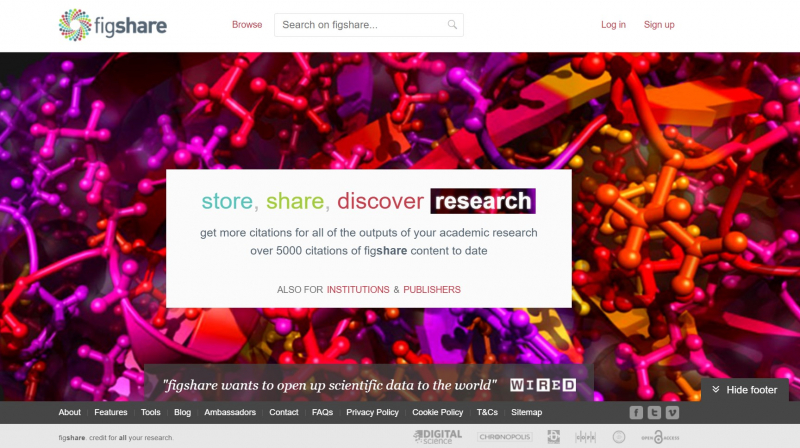
What’s more, you can check the number of citations, uploads and references to your work straight from your Figshare personal profile, and the tool does not just count direct citations but also references in Wikipedia, the media, social media, blogs and so on. The detailed analysis can also show the geography and demography of these references and citations.
Finally, Figshare is an open library of articles in all fields of scientific knowledge, which can be used by researchers to share relevant information with their colleagues and keep track of the latest trends and discoveries. Tens of thousands of new articles are published there on a daily basis.
Figshare facilitates the promotion of the idea and concepts of FAIR data - an ideal that modern science aims to achieve.
Writeful

Writeful is a new product by Digital Science which has a great potential. Its goal is to help students, researchers, authors and editors write using scientific, academic English language. The tool can be especially useful, and even indispensable for those for whom English is not a native language.
Writeful’s machine learning algorithm was trained on an immense amount of published articles in all fields of knowledge. Its key function is to check whether a text corresponds with the principles of English academic writing, and offer replacement options for the elements which don’t.
Relevant reading: How to Write an Article That Will Be Accepted by International Journals
As opposed to common grammar checkers and similar tools like Grammarly or LanguageToo, Writeful checks not just the basic grammar, punctuation and spelling, but also the meaning of a word or a phrase within a context and whether they are appropriate for use in academic writing. Thanks to this narrow focus, Writeful’s developers succeeded in training the algorithm well: for one, the analysis of users’ behavior showed that 92% of replacement proposals were accepted.
Despite being so new, the product has already won the trust of major publishers: for example, it is being actively used by Cambridge University Press for quick spelling and grammar checks of all research associated with COVID-19; also, it has been recently introduced by the Hindawi open science portal.
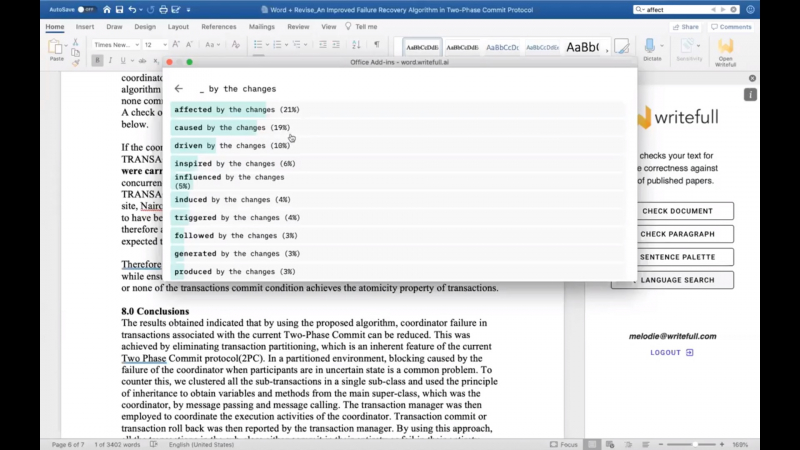
Writeful does not simply correct mistakes, but it also helps to learn academic writing thanks to its “language search” and “sentence palette” functions. Language search allows you to quickly search for a word or a phrase in Writeful’s integrated database, so that you can check whether you chose the correct words, that they are appropriate in a specific context and correspond with the principles of academic writing. You can also look through examples of publications with such words or phrases and see a list of synonyms.
Another instrument is the sentence palette, a collection of samples of the most widespread expressions. All of them are split into several sections that correspond to the components of any English research article: introduction, methods, literature, results, and conclusion. The use of such samples can not just speed up the process of writing an article and make it easier, but also make the language more academic in its nature.
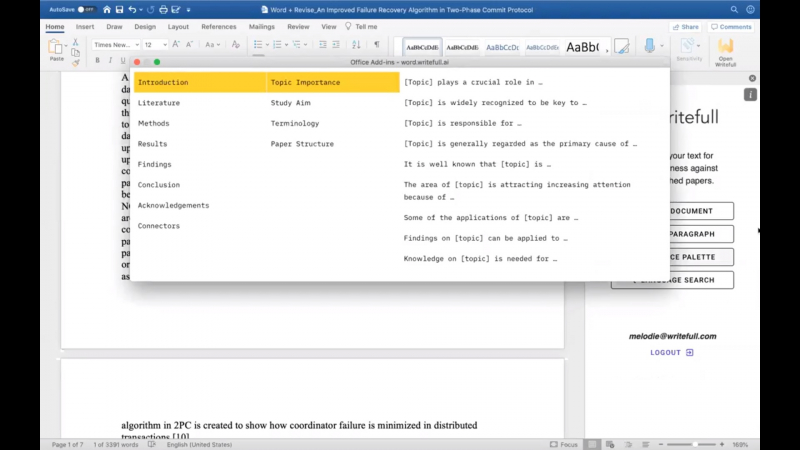
The third unique feature of Writeful, and maybe its most important one, is its ability to search for missing citations. Based on semantic analysis, the tool identifies places where a citation or a reference to a source is expected. Those are phrases like “scientists discovered that...”, “it has been proved that…” and the like. This function can considerably increase the effectiveness of preparing an article for publication or defense, as the presence of citations and references is among the main criteria of the scientific nature of a text.
Writeful works in several modes: as a tool integrated in Microsoft Word, as a component of Overleaf, Digital Science’s text editor, and as individual programs Writeful Revise (for quick editor checkup) and Writeful Cite (for identifying missing citations). All of these solutions are still at pilot or beta-testing stages, so they are all available for free with limited functions. In future, the developers are planning to create two versions of the tool: one for British and another for American English.



